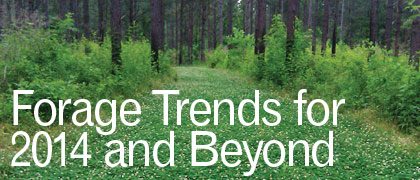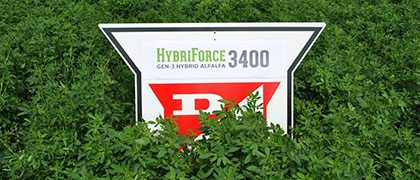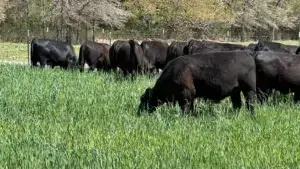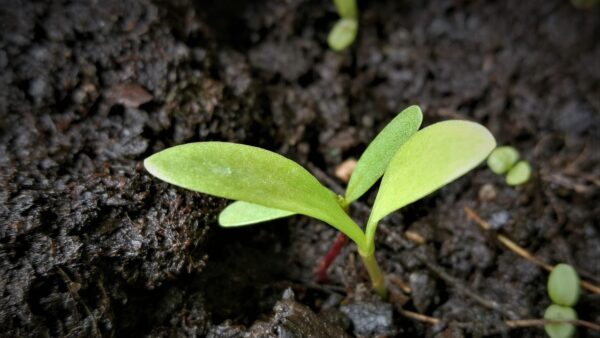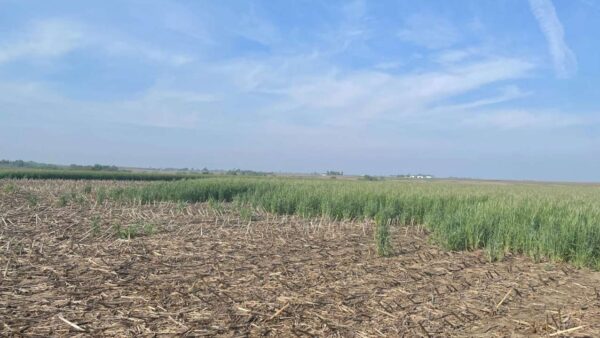Forage companies build on solid products to increase productivity.
No matter what kind of livestock they are working with, it’s safe to say one of producers’ biggest concerns is maximizing the productivity of their stock given the amount of grazing land available. One way to do that is through advancements in forage.
Tim Clark, forage product manager for Dairyland Seed, says his company’s primary concern has always been the measurable end result of the forage they sell—milk.
“The biggest thing for Dairyland Seed is more milk per acre. The silage industry tends to move through different trends—be they novelty traits in silage or different processing—but Dairyland has always been about milk per acre,” he says. “We have to justify the productivity—that being milk—versus the most restrictive element out there—land.”
As part of that philosophy, Clark says Dairyland is going to continue building on products it has found to be successful in the past. This includes the release of a new variant of the company’s award-winning HybriForce alfalfa, HybriForce 3400, the world’s first third-generation hybrid alfalfa, in the spring of 2014.
“We founded HybriForce 400 alfalfa in 2001. It took nine years before we put out the second generation in 2009, which was significantly better than the first one. And now, just four years later, we’re launching the third one,” says Clark.
HybriForce 3400 offers a five percent yield advantage over Dairyland’s previous generation of HybriForce, according to Clark, and a staggering 12.3 percent advantage in yield over the competition when results were compared head-to-head. Those figures aren’t a fluke, says Clark, as HybriForce 3400 has been in testing for nearly a decade.
“HybriForce 3400 is entering the industry as, we believe, the most extensively tested alfalfa out there,” explains Clark. “We had identified one of the parents in 2003, and since 2004 we’ve had this in our in-house data sampling. It’s been tested at the university level since 2008.”
Clark notes that Dairyland’s partnership with Dow AgroSciences has been responsible for a shift of the company’s resources into more research and development of new hybrids like this one.
“Our Gen 2 has been doing such a great job for us [that] we didn’t have to launch Gen 3, but the development is complete and we’ve got a very good supply going into 2014. So with the demand for better forage yield, we have to get this out there,” he says, adding that Dairyland is expecting and preparing for healthy demand for the new product.
Looking ahead to future alfalfa production, Clark says the company has also been working with Neal Martin, former head of the U.S. Dairy Forage Research Center. The collaboration has focused on expanding the capabilities for alfalfa in the ration.
“We support the U.S. Dairy Forage Research Center and its program to separate the leaf-to-stem ratio in alfalfa, so we can use those two different components to bring them back together in a forage ration,” explains Clark. “And that’s just one of the many exciting projects led by the U.S. Dairy Forage Research Center.”
Dairyland isn’t restricting its new developments this year to alfalfa. The company is also building on the number of available varieties of its HiDF Corn Silage program, says Clark.
“HiDF, which stands for highly digestible forage, is a program unique to Dairyland Seed since 1997. Our popularity has grown so much that we’re entering 2014 with our biggest product line ever in highly digestible corn silage varieties,” Clark says, noting that the demand for HiDF has actually outpaced Dairyland’s supply in the last five years. As a result, the company has been working on bolstering its stock in advance of 2014.
“We listen to our growers, and we build the best forage product available in the silage industry based off of that feedback and based off of the proprietary genetics that we founded this program on,” he adds, noting the company is focusing on building up stock and expanding to more varieties of its current genetic line.
Dairyland Seed is getting ready to release the newest generation of its HybriForce alfalfa in early 2014. HybriForce 3400 is being touted as world’s first third-generation hybrid alfalfa.
Pennington working to promote novel endophytes
At Pennington Seed, the company that pioneered research into novel endophyte tall fescues, forage agronomist Chris Agee says the current focus isn’t so much on developing new products as it is on getting more livestock farmers to adopt types of forage grasses that will improve herd productivity.
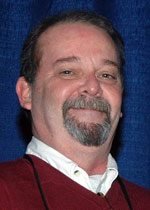 Pennington Seed forage agronomist Chris Agee. |
Tall fescue grasses, which are commonly used for cattle grazing, contain a fungus called an endophyte, which provides the grass with tolerance to drought, insects, heat and a number of other external conditions, says Agee. The grass and its endophyte live symbiotically, but not necessarily without a downside.
“A plant without the endophyte is not nearly as persistent as a plant with it, but the problem is that the Kentucky 31 [fescue] was planted on millions of acres in the 1940s and ’50s in the U.S., and the endophyte that’s in it produces animal toxins as well—so you’ve got this great, persistent plant, but it has negative effects on livestock,” explains Agee.
Novel endophytes, like the ones Pennington produces, don’t have those same toxic effects on livestock yet they provide the benefits found in other grasses. Pennington started producing them in 2000, and now several other companies are getting on board.
“We were the only ones for a while but now there’s some competition, which is good, since it gives some extra credibility to novel endophyte technology,” Agee notes with a laugh.
Now, Pennington and several other seed producers—including Barenbrug, DLF International Seeds and Mountain View Seeds—are working together as part of the Alliance for Grassland Renewal in Missouri (www.grasslandrenewal.org), hoping to encourage farmers to replant their grazing fields with these new types of novel endophyte-bearing fescues.
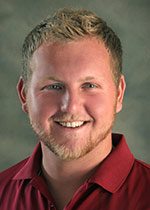
Dairyland Seeds’ forage product manager Tim Clark. |
“[Changing fields over will] improve production so much more per acre. That’s really the name of the game—the goal is produce more per acres, more efficiently,” says Agee. “On the old Kentucky 31, the average daily gain—which is how much weight a cow will gain in a day of eating—is about three-quarters of a pound. On the novel endophytes, it can be one-and-three-quarters to two pounds, so you’re getting a lot more production per acre.
“You’re not expanding acres, but if you can get more production per acre, that’s huge.”
The alliance is currently working on educating farmers about the benefits of novel endophytes. Agee notes that while it won’t necessarily be an easy conversion, he’s fairly sure it will be a successful one.
“It’s a large expense to convert an old fescue field to a new one,” he says. “When you plant a new field, you can’t just throw cattle on it, so there’s a loss of production there. … In the areas that have had drought the last couple of years, folks have really reduced their herd numbers, so it is an opportunity to get to some fields that aren’t very productive and bite the bullet and change that land over when you’re not using it at the moment.”
Agee says that if the project is successful in Missouri—and, he says, the alliance assumes it will be—then plans to expand to the rest of the fescue belt will be made.
One of the grasses being suggested for changeovers of fescue fields is Pennington’s own Texoma MaxQ II, the second generation of its novel endophyte, which is designed to last longer in the fescue seed.
“It persists in the seed better. Sometimes in different products you’ll find that the endophyte, which lives around the seed, sometimes dies quicker than the seed loses germination. That’s one reason why the seed is expensive, since we can’t carry it over and basically have one year to sell the seed before we pull it off the shelf for quality control reasons,” explains Agee. “So we’ve got more seed production going, so we’re going to have more of that available.”
In addition to working to expand the marketplace for its novel endophytes, Agee says that Pennington is looking at alternative uses for more of its existing products.
“We have a great white clover called Durana White Clover, which is very grazing tolerant and great in adverse environmental conditions. Any time you get a legume like that, that has the ability to fix atmospheric nitrogen, and can incorporate that into an agriculture system, that’s a plus,” he says, adding the clover can be used for both grazing and as a “living mulch” in grow crop operations like orchards or tree plantations.
“We’re always looking at how our current products can be used differently, and how different uses can benefit producers,” he says.
John Towns


